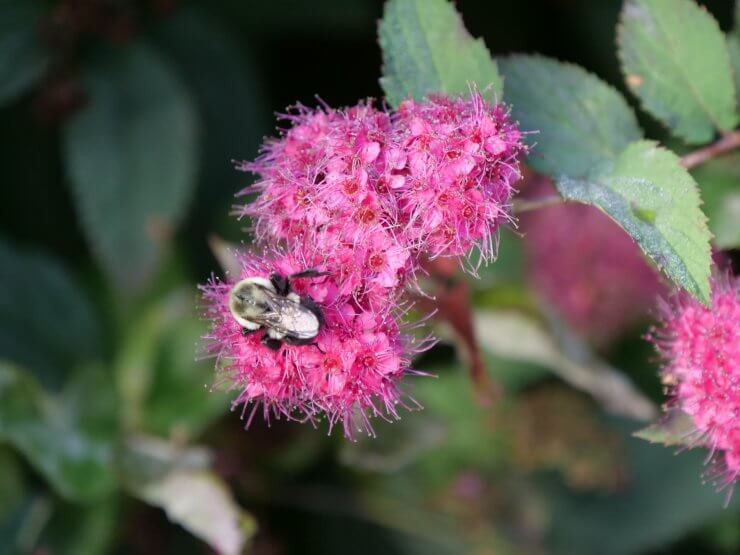
Spiraea Double Play Doozie
We have a three-step process for drought-tolerant gardening to help your existing garden become the lush drought-tolerant garden of your dreams.
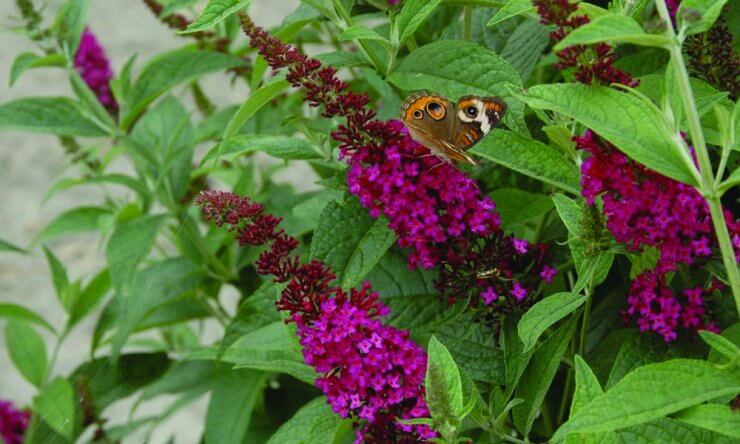
A pollinator on super drought tolerant shrub, ‘Miss Molly’ butterfly bush.
- Choose the best low-maintenance, drought-tolerant plants.
Plant a few reliably vigorous plants throughout your garden, and they’ll take the spotlight during periods of drought. This will help take the visual pressure off of your less happy plants.
Here are three of our favorite:
As cute as a button yet tough as nails, Low Scape Mound® Aronia is an innovative dwarf selection that is adaptable to most any soil. This versatile little black chokeberry offers dark glossy foliage, loads of white flowers in spring, black summer fruit, and intense red foliage in autumn. 1-2’ tall, 2’ wide, USDA zone 3-9.
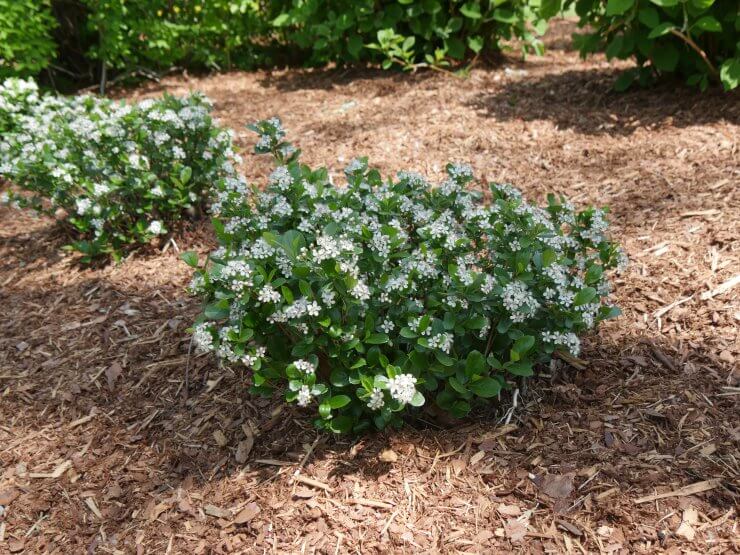
Aronia Low Scape Mound
Discover 7 top tips for growing, harvesting, and enjoying tomatoes from your home garden—when you access the FREE guide The Best Way to Grow Tomatoes, right now!
Double Play Doozie® is a sterile spirea; which not only makes it non-invasive, but its lack of seed also makes it a perpetual bloomer, putting all of its energy into creating wave after wave of red-pink flowers from early summer through frost. No deadheading required! Naturally grows as a neat, 2-3’ mound. USDA zone 3-8.
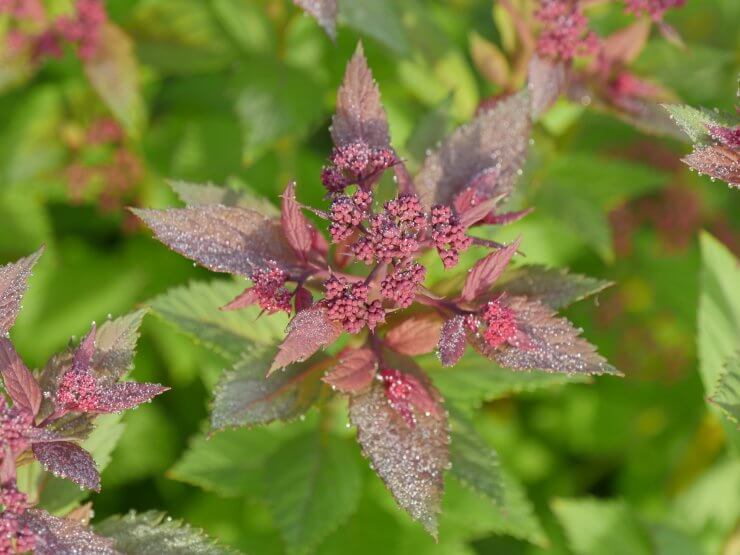
Spiraea Double Play Doozie
Also non-invasive, the fragrant flowers of ‘Miss Molly’ butterfly bush are a rich sangria-red, which is typically even more intense in warm weather and hot climates. But it’s not just the flower color that sets ‘Miss Molly’ apart – it also boasts a refined, 4-5’ semi-dwarf habit that is perfect for gardens and residential landscapes. Ideal for USDA zones 5-9.
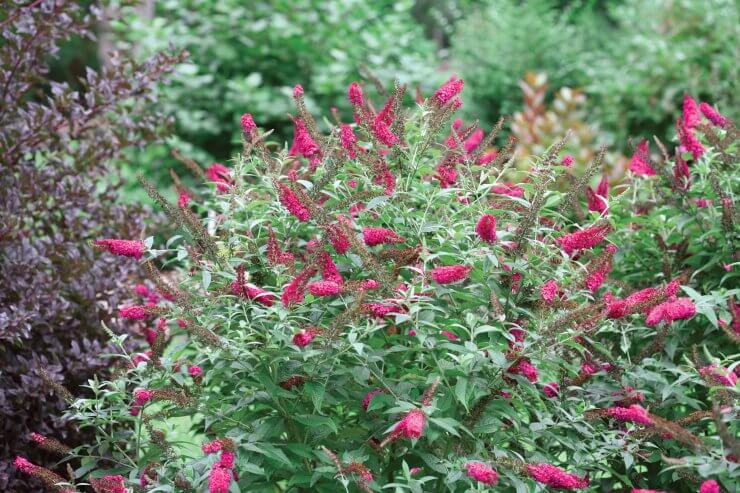
Buddleia Miss Molly
- Plan to water the first year.
In a plant’s description, you’ll often see the caveat, “drought tolerant once established.” This essentially just means that during the first growing season it’ll need to be watered when precipitation isn’t providing enough water to keep the soil moist. We have a few tips on how to be water-wise in your own garden and how to water your newly planted drought tolerant shrubs:
Apply mulch after planting. Mulch will help retain soil moisture better than any other product.
When you notice the soil is dry or almost dry, you’ll want to water your new shrubs at ground level. By watering at the base instead of from above, you’re saving water from being lost to evaporation or misapplication (being applied to foliage or empty spots in the garden bed).
Water in the morning, this gives the water more time to soak in before the heat of the day comes along to evaporate what’s left on the mulch or soil surface.
Water deeply each time. Plants that are watered more thoroughly but less often will perform better than plants that are watered lightly and more often.
Be sure to water all around the root ball as well as just outside of it to encourage the roots to expand outward.
Watering a plant as it gets established in the summertime in a drought tolerant garden.
Although this may seem counterintuitive for a water wise garden, watering when necessary during the first year is really critical for setting the plant up for success. Once it has developed a healthy root system, it’ll be able to access water in the surrounding area to help support its foliage and flowers.
- Keep an eye on pruning.
To stay dense and lush looking, some plants benefit from regular rejuvenation pruning or a bit of shaping in the springtime. Just make a note of how dense your plant is looking during the growing season and plan to trim it at the appropriate time.
TIP: If you’re seeing a lot of damage in spring or it looks like your plant is “shrinking,” that indicates it would benefit from a bit more water than it’s getting.
Pruning a plant in the spring to make it more dense.
Want to know more about drought-tolerant plants and their pruning needs? Visit https://bit.ly/water-wise-PWCC-Plants, or scan this code:

Noting that this piece is edited by Natalie Carmolli for Proven Winners® ColorChoice®
Discover 7 top tips for growing, harvesting, and enjoying tomatoes from your home garden—when you access the FREE guide The Best Way to Grow Tomatoes, right now!




